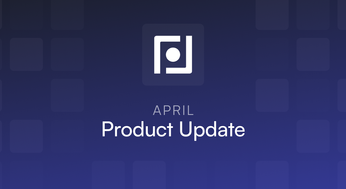
Kubernetes Service Mesh: A Practical Guide for Platform Engineers
Learn how a Kubernetes service mesh simplifies communication, enhances security, and improves observability in your microservices architecture.
Table of Contents
Microservices in Kubernetes offer flexibility and scalability, but managing communication between them can become complex. Security risks, performance bottlenecks, and troubleshooting challenges can arise as your application grows. A Kubernetes service mesh provides a dedicated infrastructure layer to simplify and secure inter-service communication. This article explores how a Kubernetes service mesh integrates with your existing architecture and the benefits it offers platform engineers. We'll examine popular service mesh Kubernetes solutions, discuss implementation best practices, and address common pitfalls. Discover how a Kubernetes service mesh can transform your microservices architecture and improve operational efficiency.
Unified Cloud Orchestration for Kubernetes
Manage Kubernetes at scale through a single, enterprise-ready platform.
Key Takeaways
- Service meshes handle inter-service communication: Offloading communication management to a dedicated infrastructure layer lets developers focus on application features, while platform teams gain control over security, observability, and traffic flow.
- Istio and Linkerd offer different approaches: Istio provides comprehensive features but requires more expertise, while Linkerd prioritizes simplicity and ease of use, making it suitable for teams new to service mesh.
- Gradual adoption minimizes disruption: Start with a small subset of applications, focusing on team training and resource optimization. Monitor performance and expand the mesh's scope as your team's comfort level grows.
What Challenges Does a Service Mesh Solve?
As you transition from a monolithic architecture to microservices, the complexity of inter-service communication increases dramatically. Instead of a single application, you now have dozens or even hundreds of smaller services interacting with each other. This intricate web of communication presents several key challenges that a service mesh is designed to address. This is especially true in Kubernetes, where the dynamic nature of deployments and scaling adds another layer of complexity.
Network Complexity in Microservices
In a microservices architecture, each service acts as an independent unit, communicating with others over the network. Managing this network becomes increasingly complex as the number of services grows. A service mesh acts as a dedicated infrastructure layer, abstracting away the complexities of service-to-service communication. Think of it as an intelligent traffic manager sitting between your services, ensuring reliable delivery of requests and responses. This simplifies development by allowing developers to focus on building application logic rather than wrestling with network infrastructure. iMesh provides a helpful overview of how a service mesh manages communication and security between different parts of your application.
Security at Scale
Securing communication in a distributed microservices environment is paramount. Each service interaction represents a potential vulnerability. A service mesh provides a centralized security layer, enforcing consistent security policies across all your services. It handles authentication, ensuring that only authorized services can communicate with each other. It also manages authorization, controlling which services can access specific resources and how. This centralized approach simplifies security management and reduces the risk of vulnerabilities, especially as your application scales. iMesh explains how a service mesh simplifies enforcing these security rules, even across different cloud providers, by handling authentication, authorization, and access control.
Observability and Troubleshooting
Gaining visibility into the interactions between microservices is crucial for identifying performance bottlenecks and troubleshooting issues. A service mesh provides comprehensive observability features, offering valuable insights into the health and performance of your application. It collects metrics, traces requests as they flow through the system, and logs access to services. This data allows you to pinpoint performance issues, identify errors, and understand the overall behavior of your application. Linkerd highlights how a service mesh simplifies development by handling these critical operational aspects, freeing developers to focus on building features. For a deeper dive into the observability benefits, iMesh's discussion on metrics, distributed tracing, and access logs is a valuable resource.
What is a Kubernetes Service Mesh?
A Kubernetes service mesh is a dedicated infrastructure layer built into your cluster that simplifies and secures communication between your services (or microservices). Think of it as a network specifically designed for your application's internal chatter. It manages all the service-to-service communication, ensuring reliability, speed, and security, without requiring changes to your microservice code. This separation of concerns lets developers focus on building features, while platform teams maintain control over the underlying network infrastructure.
Definition and Purpose of a Service Mesh
A Kubernetes service mesh is a dedicated infrastructure layer built into your cluster that simplifies and secures communication between your services (or microservices). It manages all the service-to-service communication, ensuring reliability, speed, and security, without requiring changes to your microservice code. This separation of concerns lets developers focus on building features, while platform teams maintain control over the underlying network infrastructure. For a deeper dive into service meshes and their benefits, check out Linkerd's explanation.
East-West vs. North-South Traffic
Traditional networking solutions primarily focus on managing incoming and outgoing traffic from the internet to your cluster (North-South traffic). A service mesh, however, focuses on the traffic between different parts of your application within the cluster (East-West traffic). This internal communication is crucial for microservices architectures, where multiple services interact to fulfill user requests. This video provides a clear explanation of the difference between these traffic patterns.
The Service Mesh Interface (SMI)
The Service Mesh Interface (SMI) is a standard specification that promotes interoperability between different service mesh implementations. It defines a common set of APIs for managing and configuring service mesh functionalities, such as traffic splitting, access control, and observability. This standardization allows you to switch between different service mesh providers, like Istio, Linkerd, or Consul Connect, without significant code changes, giving you flexibility and vendor independence. For more details on SMI, see this blog post on SMI traffic access control.
History and Evolution of Service Meshes
Service meshes emerged as a solution to the growing complexity of managing microservice communication in distributed systems. Early approaches involved custom-built libraries and frameworks, but these proved difficult to maintain and scale. The rise of containers and container orchestrators like Kubernetes provided the ideal environment for service meshes to flourish. With Kubernetes handling container deployment and scaling, service meshes could focus on optimizing and securing inter-service communication. This article on Linkerd offers a good overview of the evolution of service meshes.
Container Network Interface (CNI) vs. Service Mesh
While both CNIs and service meshes deal with networking within a Kubernetes cluster, they operate at different layers and serve distinct purposes. A Container Network Interface (CNI) is fundamental for basic Kubernetes networking, operating at Layer 4 and enabling communication between pods. A service mesh, on the other hand, works at Layer 7, managing traffic between services and providing advanced features like traffic routing, security policies, and observability. A CNI is a prerequisite for a functioning Kubernetes cluster, while a service mesh is an optional but valuable addition for complex microservice deployments. This Stack Overflow discussion clarifies the relationship between CNIs and service meshes. For users of Plural, our platform simplifies the management of both CNIs and service meshes, allowing you to deploy and configure them consistently across your entire Kubernetes fleet.
Key Components of a Service Mesh
A service mesh consists of three key components:
- Sidecar Proxies: These lightweight proxies run alongside each service instance, intercepting and managing all incoming and outgoing network traffic. They act as intermediaries, handling tasks like routing, authentication, and encryption. Tigera's guide provides a good overview of this architecture.
- Control Plane: The control plane is the brains of the operation, providing a centralized interface for configuring and managing the mesh. This includes setting traffic routing rules, security policies, and observability configurations.
- Data Plane: The data plane comprises the sidecar proxies and their interactions. It's where the actual traffic management and routing happens, based on the rules defined by the control plane.
How a Service Mesh Integrates with Kubernetes
A service mesh seamlessly integrates with Kubernetes, leveraging its existing networking and service discovery mechanisms. By offloading complex networking tasks to the mesh, your application developers can focus on business logic. Meanwhile, platform teams gain granular control over service security, observability, and traffic management. For example, a service mesh can prevent outages by implementing features like request timeouts, rate limiting, and circuit breakers. These features enhance the resilience of your application by isolating failures and preventing cascading issues, as discussed in Kong's blog post. Service meshes also provide consistent communication patterns across your cluster, simplifying management and troubleshooting.
Architecture of a Kubernetes Service Mesh
A service mesh consists of two primary components: the control plane and the data plane. These two planes work together to manage and control communication within your Kubernetes cluster.
The Control Plane: Managing Your Service Mesh
The control plane is the brains of the service mesh. It configures the mesh, applies policies, and provides a centralized management interface. Think of it as the command center, directing how the data plane proxies should behave. This includes:
- Service Discovery: The control plane maintains a registry of all services running within the mesh, enabling services to locate and communicate with each other.
- Traffic Routing: It determines how traffic flows between services, implementing routing rules, load balancing, and fault injection for testing. This allows for sophisticated traffic management strategies like canary deployments and blue/green deployments.
- Security Policy Enforcement: The control plane enforces security policies, such as mutual TLS (mTLS) authentication and authorization, ensuring secure communication between services. This centralizes security management, simplifying operations and improving your security posture.
- Observability and Monitoring: It collects metrics and traces from the data plane, providing insights into service performance and health. This data is crucial for troubleshooting and optimizing your applications. As explained in Understanding Service Mesh in Kubernetes, the control plane is the central point of configuration and management for the entire mesh.
The Data Plane: Sidecar Proxies in Action
The data plane comprises a network of sidecar proxies deployed alongside each service instance in your Kubernetes pods. These proxies intercept all inbound and outbound network traffic, allowing the mesh to manage inter-service communication. Linkerd's explanation of a service mesh highlights the role of proxies in managing communication, routing, security, and monitoring.
- Sidecar Deployment: A sidecar proxy is injected into each pod, running alongside your application container. This ensures that all traffic to and from the application flows through the proxy, enabling the mesh to control and monitor all communication.
- Traffic Interception: The sidecar intercepts all network communication, giving the service mesh complete control over how services interact. This is key to implementing features like traffic splitting and fault injection, enabling advanced deployment strategies.
- Policy Enforcement: The sidecar enforces the policies defined by the control plane, such as mTLS authentication and authorization rules. This offloads security concerns from the application code, allowing developers to focus on business logic. Service Mesh: Enhancing Microservices Communication in Kubernetes details how these proxies enhance communication security without requiring changes to application code.
- Metrics and Tracing: The sidecar collects metrics and tracing data, which are then sent to the control plane for aggregation and analysis. This provides valuable insights into the behavior and performance of your services, enabling effective monitoring and troubleshooting.
Why Use a Kubernetes Service Mesh?
A service mesh offers several advantages for managing and securing microservices in Kubernetes. Let's explore some key benefits:
Specific Benefits of Using a Service Mesh
Improved Security
Security is paramount in a microservices architecture. A service mesh offers robust security features, including encryption and access controls, creating a “zero-trust” environment where every connection is verified. This helps protect your applications from unauthorized access and data breaches. By implementing mutual TLS (mTLS) encryption, the service mesh ensures secure communication between services, even within the cluster. This eliminates the need for complex application-level security configurations and simplifies security management. As Istio explains in their overview of service mesh, this approach significantly strengthens your security posture without requiring extensive code changes.
Enhanced Observability
Understanding how your services interact is crucial for performance optimization and troubleshooting. A service mesh provides detailed monitoring and tracking of inter-service communication, making it easier to identify and resolve issues. It integrates with popular monitoring tools like Grafana and Prometheus, offering rich visualizations of your application's traffic flow and performance metrics. This enhanced observability empowers you to pinpoint bottlenecks, diagnose errors, and gain deep insights into the behavior of your microservices. The Istio documentation provides a good overview of how a service mesh enhances observability.
Simplified Traffic Management
Managing traffic flow in a complex microservices environment can be challenging. A service mesh acts as a smart traffic director, simplifying tasks like A/B testing, canary deployments, and load balancing. It allows you to define fine-grained routing rules, enabling sophisticated traffic management strategies without modifying your application code. This simplifies the implementation of advanced deployment patterns and improves the overall resilience of your application. Tigera's guide on service mesh and Kubernetes offers a helpful explanation of how a service mesh simplifies traffic management.
Increased Resilience
Microservices should be designed to tolerate failures without impacting the entire application. A service mesh enhances resilience by implementing features like request timeouts, rate limiting, and circuit breakers. These features prevent cascading failures and isolate problematic services, ensuring that your application remains available even in the face of individual service outages. Kong's blog post discusses how service meshes improve the resilience of applications running in Kubernetes. For teams looking to manage the complexity of Kubernetes at scale, including service mesh deployments, Plural offers a unified platform for streamlined management and deployment.
Securing Your Kubernetes Service Mesh
Security is a critical concern in distributed systems. A service mesh strengthens your security posture by adding features like encryption and fine-grained access controls. Mutual TLS (mTLS) encrypts communication between services, verifying the identity of each service. This makes it significantly harder for attackers to intercept or tamper with data. This is especially valuable in environments handling sensitive information. With a service mesh, you can define and enforce access policies based on service identity, ensuring that only authorized services can communicate. This limits the blast radius of potential security breaches.
Observability and Troubleshooting with a Service Mesh
Troubleshooting microservice interactions can be complex. A service mesh provides enhanced observability, offering detailed insights into service performance and behavior. By tracking key metrics like latency, error rates, and request volume, a service mesh helps you quickly identify performance bottlenecks and diagnose issues. Distributed tracing allows you to follow requests as they traverse your application, providing a clear picture of the entire request flow. This granular visibility simplifies debugging and accelerates the resolution of production incidents. Learn more about service mesh and observability.
Traffic Management and Resilience with a Service Mesh
A service mesh acts as an intelligent traffic manager, optimizing communication between services. Features like traffic splitting and routing allow you to direct traffic to different versions of a service, enabling canary deployments and A/B testing. Resilience is also significantly improved with capabilities like retries, timeouts, and circuit breaking. Retries ensure that transient errors don't disrupt service availability, while timeouts prevent long-running requests from consuming resources indefinitely. Circuit breakers protect your application from cascading failures by stopping traffic to unhealthy services. These features enhance the overall stability and reliability of your application.
Choosing the Right Service Mesh for Kubernetes
Choosing the right service mesh depends on your specific needs and priorities. Here's a breakdown of popular options:
Istio: A Deep Dive
Istio is a robust and feature-rich service mesh known for its advanced traffic management capabilities. It offers fine-grained control over routing, fault injection, and traffic splitting, making it suitable for complex deployments. Istio's comprehensive security features, including authorization and authentication, help establish a zero-trust environment. While powerful, Istio can be more resource-intensive than other options and may require a steeper learning curve. You can learn more about its architecture on their site.
Linkerd: Simplicity and Performance
Linkerd prioritizes simplicity and ease of use. It's designed to be lightweight and have a minimal resource footprint, making it a good choice for organizations looking for a quick and easy way to get started with a service mesh. Linkerd excels in providing core service mesh functionalities like traffic management, security, and observability without the complexity of Istio. This focus on simplicity makes it easier to operate and manage, particularly for teams new to service mesh technology.
Kong Mesh: Turnkey Service Mesh Solution
Kong Mesh, built on Kuma and Envoy, offers a turnkey solution for organizations seeking simplicity and scalability in their service mesh. Its ease of deployment, often achievable with a single command, makes it an attractive option for teams looking to quickly implement a service mesh. Kong Mesh emphasizes streamlined operations, allowing you to focus on application development rather than complex infrastructure management.
Grey Matter: Intelligent Service Mesh
Grey Matter positions itself as an intelligent, Envoy-based hybrid service mesh. It offers advanced features for managing microservices, including traffic management, security, and observability. This positions Grey Matter as a comprehensive solution for organizations with more complex microservice architectures. Learn more about Grey Matter's approach to intelligent service mesh management.
Consul Connect: Service Mesh for Multi-Platform Environments
If your organization operates in a multi-platform environment, Consul Connect offers a compelling service mesh solution. Running on Kubernetes, Consul Connect provides secure connections between services, alongside service discovery, configuration, and segmentation across various platforms. This cross-platform compatibility makes Consul Connect a valuable tool for organizations with hybrid or multi-cloud deployments.
Calico: A Simpler Alternative for Network Policy Management
For teams seeking a simpler approach to network policy management, Calico presents a compelling alternative to a full-fledged service mesh. While offering benefits like security, monitoring, and control, Calico integrates directly into Kubernetes, avoiding the complexity of an additional infrastructure layer. This direct integration simplifies deployment and management, making it a suitable choice for teams prioritizing ease of use.
Choosing the Best Service Mesh: Key Considerations
Selecting the right service mesh requires careful consideration of several factors. There is no one-size-fits-all solution, and the best choice depends on your organization's specific needs and context. Understanding service mesh in Kubernetes provides a good starting point for evaluating your options.
Team Expertise and Resources
Evaluate your team's existing expertise with service mesh technologies and the resources available for implementation and maintenance. A more complex mesh like Istio may require significant investment in training and ongoing support, while simpler solutions like Linkerd or Calico might be more manageable for smaller teams or those new to service meshes. Consider using a platform like Plural to streamline management and reduce operational overhead.
Complexity vs. Simplicity
Consider the trade-off between the rich feature set of a complex mesh and the ease of use of a simpler solution. If your application requires advanced traffic management and security features, the complexity of Istio might be justified. However, if your needs are more basic, a simpler mesh like Linkerd could be a better fit, reducing operational overhead. A platform like Plural can help manage this complexity, regardless of your chosen service mesh.
Scalability Requirements
Think about your application's scalability needs. Some service meshes are better suited for large-scale deployments than others. Evaluate the performance characteristics of each mesh and choose one that can handle your anticipated traffic volume and growth. Plural is designed to manage Kubernetes deployments at scale, integrating with various service mesh solutions.
Integration with Existing Infrastructure
Assess how well each service mesh integrates with your current infrastructure. Consider factors like compatibility with your existing monitoring tools, logging systems, and security policies. A seamless integration will simplify deployment and ongoing management. Plural can help integrate your chosen service mesh with your existing infrastructure, further streamlining operations.
Comparing Kubernetes Service Mesh Options
Several open-source service mesh options are available, each with its own strengths. Istio and Linkerd are among the most popular, offering different approaches to service mesh implementation. Istio provides a comprehensive set of features but can be more complex to manage. Linkerd offers a simpler, more lightweight approach, ideal for smaller deployments or teams getting started with service meshes. Other options like Consul Connect and NGINX Service Mesh cater to specific use cases and integrate well with their respective ecosystems. A good overview of these tools can be found in this guide. Consider your team's expertise, infrastructure requirements, and desired level of control when evaluating different service mesh solutions.
Implementing Your Kubernetes Service Mesh
Implementing a service mesh in Kubernetes offers significant advantages but requires careful planning and execution. Let's explore some best practices and potential challenges.
Strategies for Adopting a Service Mesh
Adopting a service mesh isn't a flip-the-switch process. Start with a small, non-critical subset of your applications to understand the operational impact and gain practical experience. Gradually expand the mesh's scope to more critical services as your team's comfort level grows. This measured approach minimizes disruption and allows for iterative learning. Offloading complex networking to the mesh lets developers focus on business logic, while platform teams gain more control over security, observability, and traffic management. This separation of concerns is a key benefit of a service mesh architecture.
Optimizing Service Mesh Performance
While a service mesh enhances functionality, it introduces additional network hops due to the sidecar proxies. Optimize performance by carefully configuring resource limits for these sidecars and tuning the mesh's control plane components. Leverage the mesh's built-in traffic management features—like request timeouts, rate limiting, and circuit breakers—to prevent cascading failures and ensure application resilience. These capabilities, discussed in this Kong blog post, can significantly improve the reliability of your services. Tools like Istio and Linkerd offer built-in monitoring and tracing, providing valuable insights into service performance and enabling data-driven optimization. This article offers a deeper dive into application performance monitoring within Kubernetes.
Common Service Mesh Pitfalls to Avoid
Managing a service mesh introduces another layer of infrastructure, requiring expertise in networking, security, and observability. Adequate training and knowledge sharing are crucial for successful adoption. Over-reliance on the service mesh for all networking needs can lead to unnecessary complexity. Carefully evaluate which functionalities are best handled by the mesh and which are better addressed through other mechanisms. While a service mesh provides a central control plane for secure and efficient communication, understanding its intricacies is essential to avoid operational overhead. This article further explores the complexities of managing this additional layer of infrastructure within Kubernetes. For additional context on common Kubernetes challenges, see this piece on Kubernetes pain points.
Managing and Maintaining Your Service Mesh
Implementing a service mesh is just the first step. Successfully managing and maintaining it requires ongoing effort and a clear strategy. Let's explore key factors that contribute to long-term success with your service mesh.
Key Factors for Successful Implementation
Several factors contribute to the successful implementation and ongoing management of a service mesh. Addressing these proactively will set your team up for success.
Technology Support
Choosing the right service mesh is paramount. Evaluate your specific needs and technical capabilities. Do you need advanced traffic management features, or are basic functionalities sufficient? Consider the complexity of the mesh and its resource requirements. Istio, known for its comprehensive features, might be suitable for complex deployments but demands more expertise. Linkerd, with its focus on simplicity and ease of use, could be a better fit for teams new to service mesh technology. Tigera's guide on choosing a service mesh offers valuable insights into selecting the right technology for your needs. For simpler deployments, focusing on robust network policies with a tool like Calico might be a more appropriate solution.
Enterprise Support
Beyond the technology itself, consider the level of support available. A strong community or commercial support can be invaluable when encountering challenges. Does the service mesh vendor offer enterprise-grade support, including SLAs and dedicated assistance? This can be crucial for mission-critical deployments. Also, ensure the service mesh integrates well with your existing monitoring, logging, and CI/CD pipelines. iMesh emphasizes the importance of robust support for successful service mesh implementation. For enterprise-grade support and advanced features for managing your Kubernetes deployments, including service meshes, consider exploring Plural. Our platform provides the tools and support you need to manage Kubernetes at scale.
Training and Onboarding
Investing in proper training and knowledge sharing is essential for successful service mesh adoption. Equip your team with the skills and understanding needed to operate and manage the mesh effectively. This includes training on core concepts, operational procedures, and troubleshooting techniques. Avoid over-reliance on the service mesh for every networking need, as this can lead to unnecessary complexity. Focus on using the mesh strategically for tasks it excels at, such as traffic management, security, and observability. Tigera cautions against over-dependence on the service mesh and highlights the importance of strategic implementation. Prioritize training on areas like configuring traffic routing, security policies, and observability tools specific to your chosen service mesh.
Security and Observability Best Practices
A key benefit of using a service mesh is the enhanced security and observability it provides. Let's explore how these features work in practice.
Implementing mTLS and Access Policies
Securing communication between microservices is critical in a Kubernetes environment. A service mesh simplifies this by automating mutual TLS (mTLS) implementation. mTLS encrypts all communication between services, verifying the identity of each service participating in the exchange. This makes it significantly harder for attackers to intercept or tamper with traffic. Linkerd provides a good overview of how mTLS works within a service mesh. Beyond mTLS, service meshes let you define fine-grained access policies, controlling which services can communicate. This limits the blast radius of potential security breaches by preventing unauthorized access.
Tracing and Metrics with Your Service Mesh
Observability is essential for understanding the complex interactions within a microservices architecture. A service mesh automatically collects metrics and traces from all services, providing a comprehensive view of your application's performance. Distributed tracing lets you follow requests as they flow through your system, pinpointing bottlenecks and latency issues. The aggregated metrics provide insights into service health, resource utilization, and overall system performance. Articles like this one from Tigera highlight the importance of monitoring in Kubernetes.
Troubleshooting Your Kubernetes Service Mesh
When issues arise, the rich observability data from the service mesh becomes invaluable for troubleshooting. The collected metrics and traces help identify the root cause of problems, whether it's a slow service, a network issue, or a misconfigured policy. Furthermore, service meshes can implement resilience patterns like request timeouts, rate limiting, and circuit breakers. These features, discussed in blog posts like this one from Kong, prevent cascading failures and improve overall application stability. FAUN emphasizes that effective monitoring is the cornerstone of maintaining a healthy and performant Kubernetes deployment. By combining enhanced security measures with comprehensive observability, a service mesh empowers platform teams to effectively manage and secure their Kubernetes applications.
Advanced Service Mesh Capabilities
This section explores advanced concepts in service mesh, including multi-cluster/multi-cloud deployments, CI/CD pipeline integration, and service mesh federation. These concepts are crucial for organizations looking to leverage the full potential of service mesh in complex, distributed environments.
Multi-Cluster and Multi-Cloud Service Mesh
Operating across multiple clusters, whether within the same cloud provider or spanning different providers, introduces new challenges for managing communication, security, and observability. A multi-cloud service mesh addresses these challenges by providing a unified control plane. This ensures consistent operations, observability, and policy enforcement across all your Kubernetes clusters. This consistency is critical for organizations leveraging multiple cloud services for resilience, cost optimization, or geographic reach. Furthermore, policy enforcement within a multi-cloud service mesh ensures that communication between services adheres to your organization’s security and compliance standards, regardless of the services' location.
Integrating Service Mesh into Your CI/CD Pipeline
Service mesh can significantly enhance your CI/CD pipelines. By offloading complex networking functionality to the mesh, your application developers can focus on business logic. Meanwhile, platform teams gain better control over service security, observability, and traffic management. A service mesh simplifies the implementation of canary releases by enabling precise control over traffic distribution between different versions of a service. This enables safer and more controlled deployments, minimizing disruption and allowing real-time testing and validation in production.
Service Mesh Federation and Interoperability
As organizations adopt service mesh, they often encounter the need to integrate multiple meshes, either within their own infrastructure or with external partners. Service mesh federation addresses this by enabling interoperability between different service meshes. This allows services managed by separate meshes to communicate securely and efficiently, extending the benefits of service mesh across organizational boundaries. A well-implemented Kubernetes service mesh provides a central control plane for orchestrating secure and efficient communication between containers and nodes. This centralized management simplifies network operations and provides a consistent platform for managing traffic flow across your containerized applications.
Service Mesh Considerations for Platform Engineers
Adopting a service mesh in Kubernetes introduces operational considerations for platform engineering teams. Careful planning and execution are crucial for maximizing the benefits and minimizing potential drawbacks.
Managing Resources and Overhead
Service meshes, while offering significant advantages, consume resources. The control plane components and sidecar proxies introduce CPU and memory overhead. Platform teams must account for these additional resource requirements when planning capacity and budgeting. As highlighted in this Cloud Native Now article, a service mesh provides a central control plane for secure and efficient inter-service communication. Managing the underlying infrastructure for this control plane, including the mesh and supporting services like etcd and Prometheus, becomes a key responsibility of the platform team. Proper monitoring and resource allocation strategies are essential to prevent performance bottlenecks and ensure the stability of the mesh. Consider implementing resource quotas and limits to prevent runaway resource consumption by the service mesh components.
Team Training and Adoption
Implementing a service mesh often requires a shift in team responsibilities and workflows. Application developers can focus more on business logic as the service mesh offloads complex networking tasks. However, platform teams take on the responsibility of managing and maintaining the mesh itself, including configuration, security, and troubleshooting. Adequate training for both application developers and platform engineers is essential for a smooth transition. Operational teams are often already stretched thin, and introducing a service mesh without proper training and support can exacerbate this issue, leading to decreased productivity and potential deployment delays. Clear communication and collaboration between teams are crucial for successful service mesh adoption. Establish clear communication channels and feedback loops to address any challenges that arise during the implementation and operation of the service mesh.
Balancing Complexity and Efficiency
Service meshes introduce a new layer of abstraction into the infrastructure. While this abstraction simplifies many tasks, it also adds complexity. Platform teams must carefully evaluate the trade-offs between the benefits of a service mesh and the increased operational complexity. Understanding the intricacies of the chosen service mesh, including the control plane components, data plane proxies, and the various configuration options, is crucial for effective management and troubleshooting. Effective monitoring and observability tools are essential for identifying and resolving issues quickly. Platform teams should also establish clear processes for managing upgrades, rollouts, and configuration changes to minimize disruption to application services. A well-defined strategy for balancing complexity and operational efficiency is key to realizing the full potential of a service mesh. Start with a small, well-defined use case and gradually expand the adoption of the service mesh as your team gains experience and confidence.
Related Articles
- The Essential Guide to Monitoring Kubernetes
- The Quick and Dirty Guide to Kubernetes Terminology
- Multi-Cloud Kubernetes Management: A Practical Guide
- Plural | Namespace-as-a-service
- Plural | Security & Compliance
Unified Cloud Orchestration for Kubernetes
Manage Kubernetes at scale through a single, enterprise-ready platform.
Frequently Asked Questions
What is the core function of a service mesh? A service mesh primarily manages all internal service-to-service communication within a Kubernetes cluster. It handles tasks like routing, security, and observability, abstracting away the complexities of network management from application developers. This allows developers to focus on building application logic while the platform team maintains control over the network infrastructure.
How does a service mesh improve application security? Service meshes enhance security through features like mutual TLS (mTLS) encryption, which verifies the identity of every service communicating within the mesh, protecting against unauthorized access and data breaches. Additionally, service meshes allow for granular access control policies, further restricting communication between services based on defined rules and permissions.
What are the key differences between Istio and Linkerd? Istio is a comprehensive and feature-rich service mesh offering advanced traffic management and security capabilities. However, it can be more resource-intensive and complex to manage. Linkerd, on the other hand, prioritizes simplicity and ease of use, making it a good starting point for teams new to service mesh. Choosing between them depends on your specific needs and priorities, including the complexity of your application, your team's expertise, and your resource constraints.
How does a service mesh impact application performance? While a service mesh provides many benefits, the introduction of sidecar proxies adds network hops, potentially impacting performance. Mitigating this requires careful resource allocation for sidecars, tuning the control plane, and leveraging features like timeouts and circuit breakers. Proper configuration and monitoring are essential to minimize overhead and ensure optimal application performance.
What are the key considerations for platform teams adopting a service mesh? Platform teams should consider the resource overhead introduced by the service mesh, the need for team training and adaptation to new workflows, and the balance between the mesh's complexity and operational efficiency. A gradual adoption strategy, starting with a small subset of applications, is recommended. Careful planning, resource management, and ongoing monitoring are crucial for successful implementation and operation.
Newsletter
Join the newsletter to receive the latest updates in your inbox.









